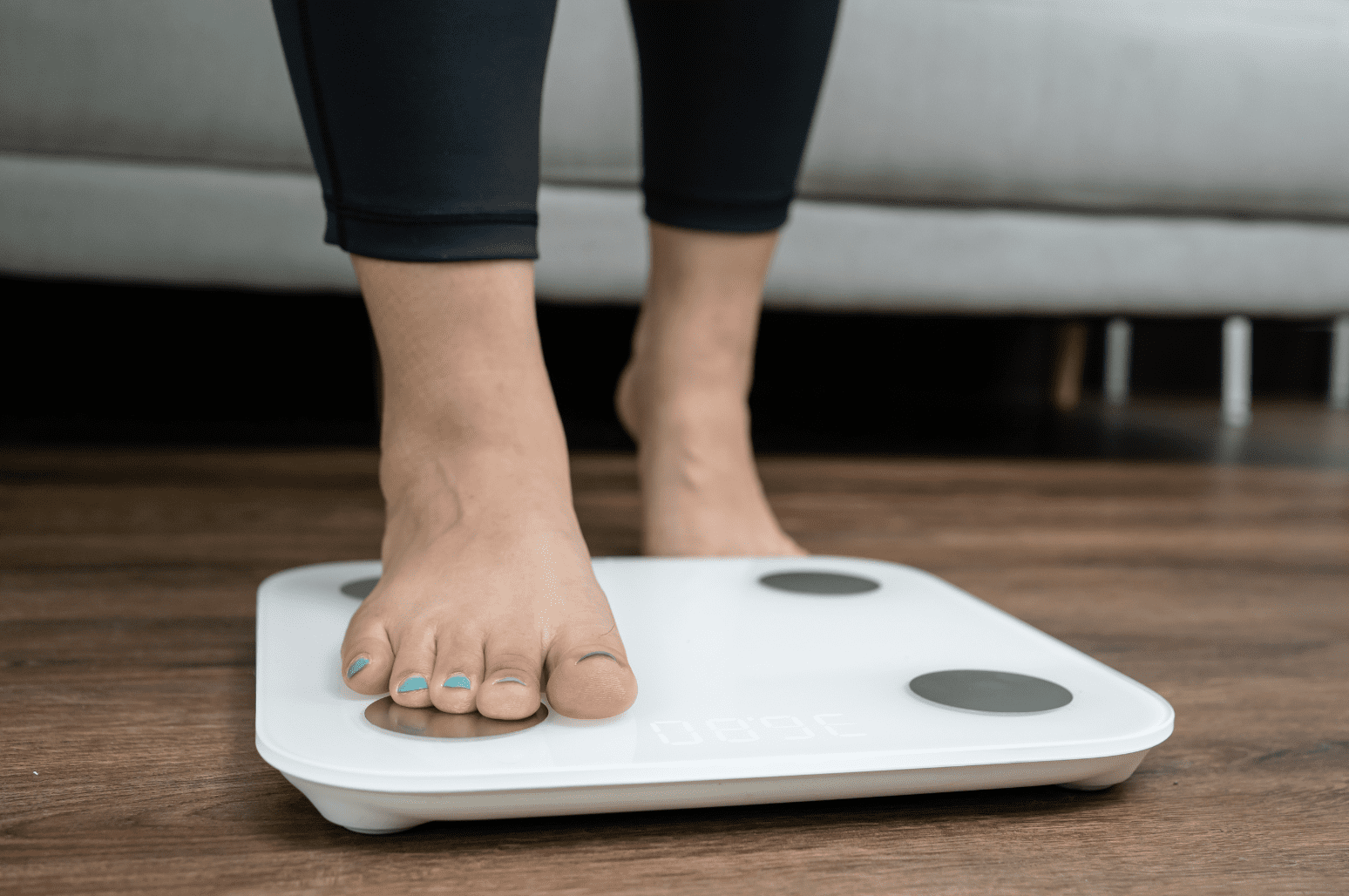What Is A Keto Diet? A Quick & Easy Guide To Ketosis

Last year your friend tried keto and lost weight! Before that, your other family member mentioned going keto for their autoimmune disease. Keto seems to be everywhere but what is a keto diet and how does it work? Here’s a quick and easy guide to help you get started on the ketogenic diet.
What is a Keto Diet?
The ketogenic diet (keto diet) is a high-fat, low-carb diet that offers myriad health benefits. Numerous studies show that this way of eating can improve your health and help you lose weight [1].
Ketogenic diets might be beneficial for a range of complex conditions, including cancer, diabetes, epilepsy, and Alzheimer’s disease [2] [3] [4] [5].
The keto diet is similar to a low-carb diet, but it’s not exactly the same. With low-carb, you just lower your carbs, but with keto, you also increase your consumption of healthy fats like avocado and fish. (For more on this read our article on low-carb vs. keto). With keto, you lower your carbohydrate intake and replace it with fat.
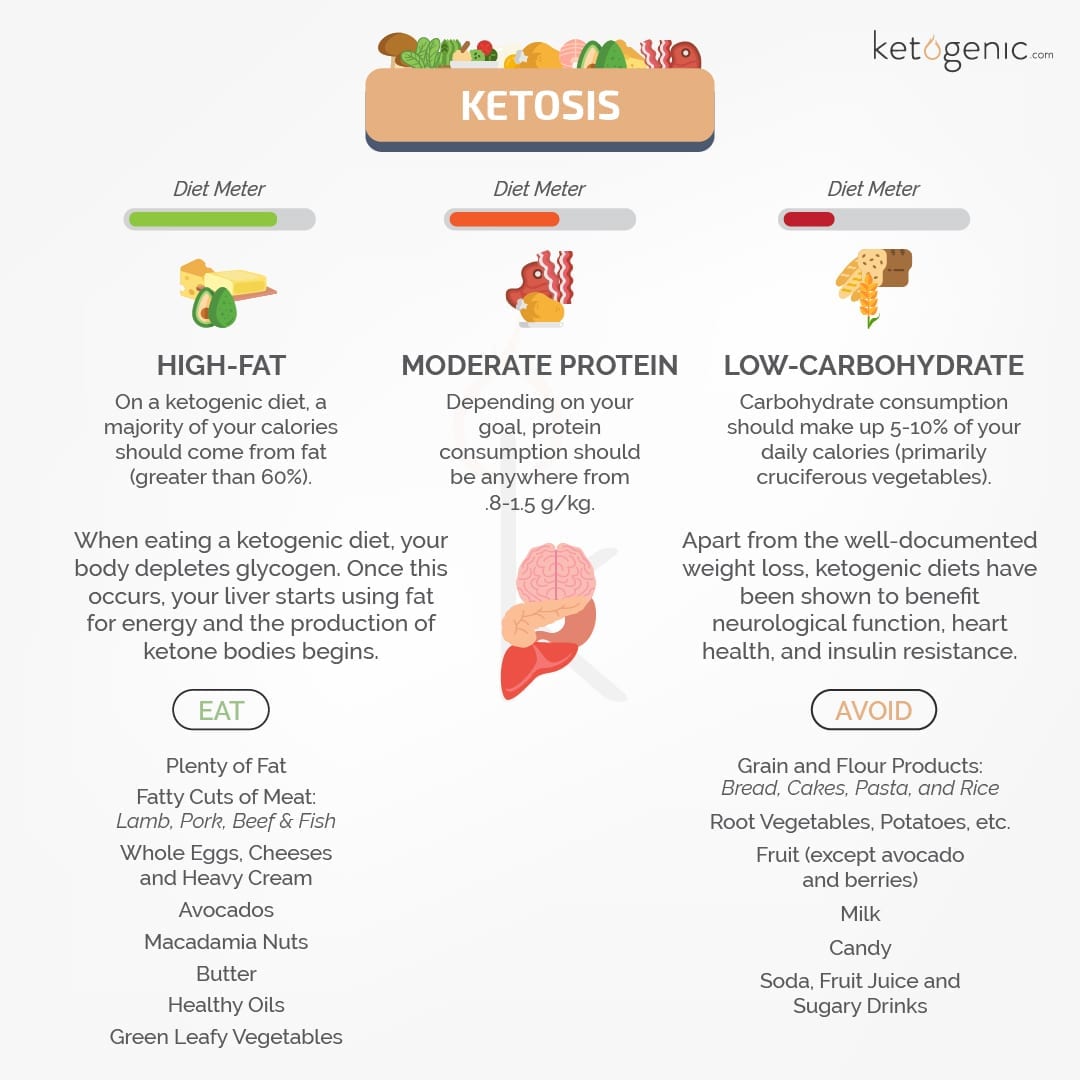
When you decrease carb consumption, your body enters a metabolic state called ketosis and you become more efficient at burning fat for energy.
There are only three macronutrients in the human diet: Carbs, fat, and protein. Your body breaks down the food you eat into these three macronutrients.
Keto focuses on high-fat, moderate protein, and low carbohydrate intake. On keto, you generally consume less than 50 grams of carbs daily. Some people might need to reduce carbohydrate intake even more to reach ketosis.
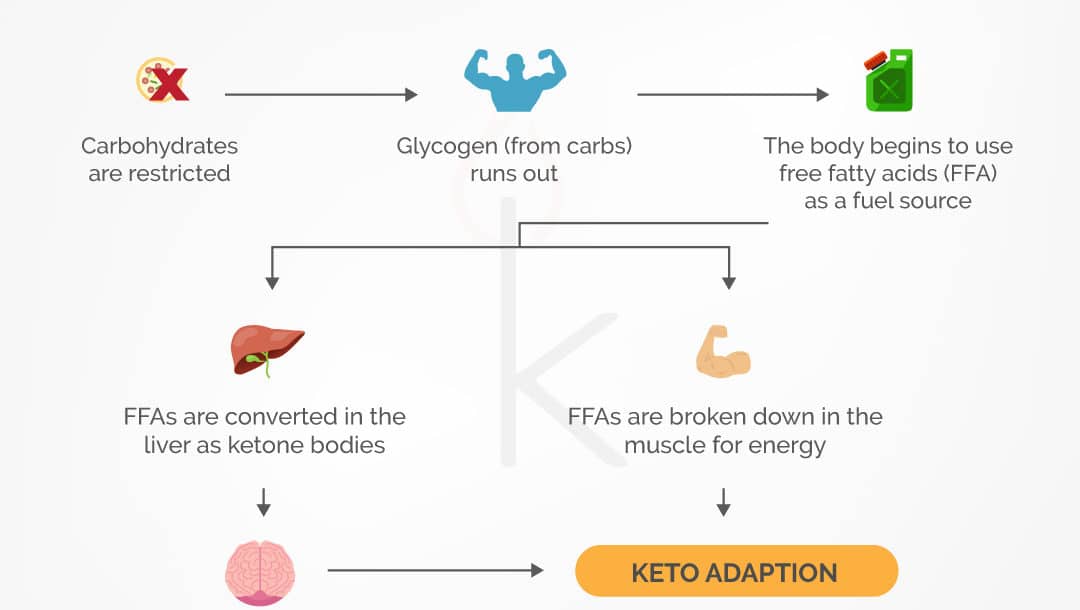
Unlike carbs, and to a lesser degree, protein, consuming fat doesn’t spike insulin — the fat-storage hormone. The ketogenic diet doesn’t increase insulin, and as a result, may improve insulin resistance.
With a focus on reducing carbs and increasing your healthy fats and protein, you’ll likely be more satiated, and you might even experience health benefits or weight loss.
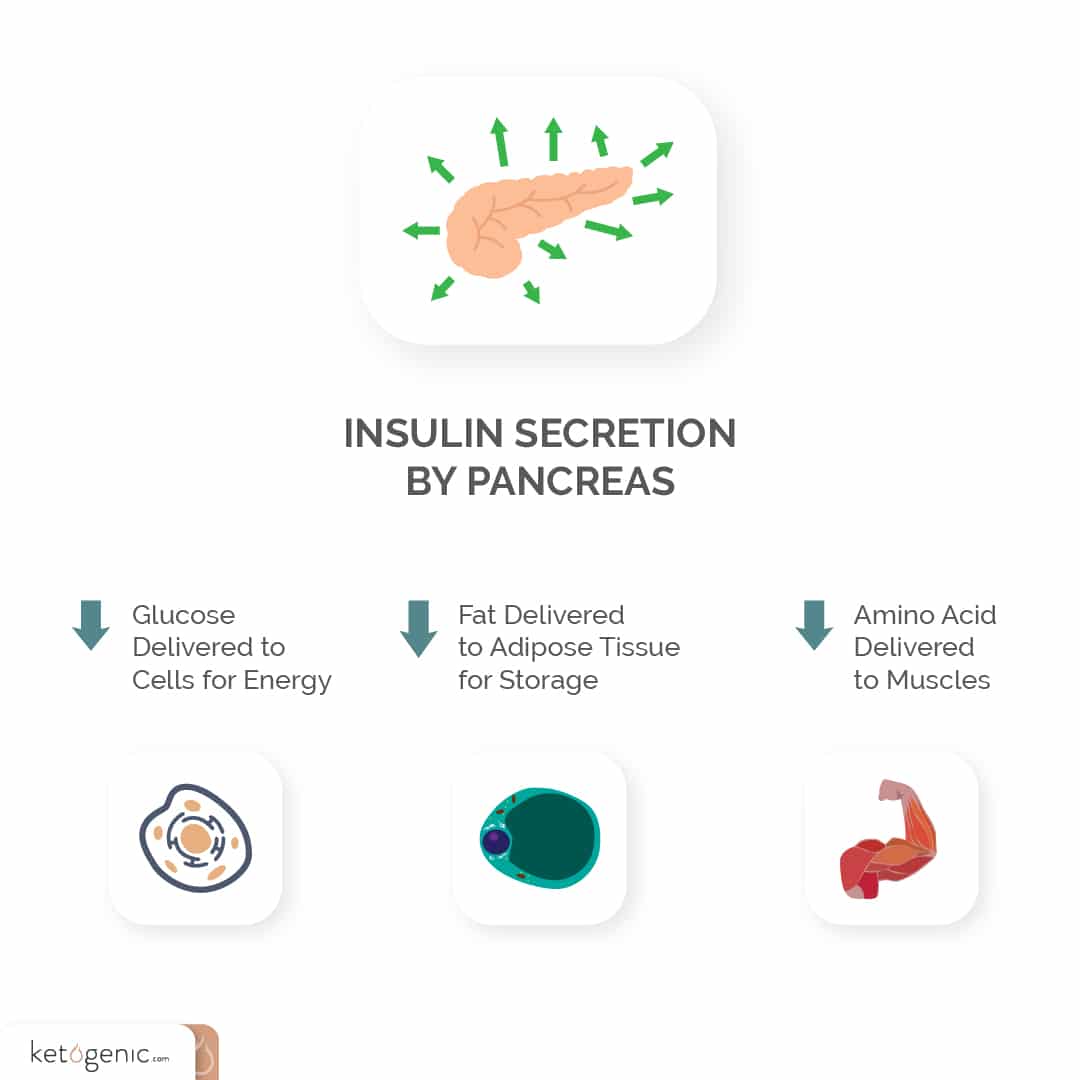
What Do I Eat on a Ketogenic Diet?
When you’re keto, you should focus on consuming low-carb, nutrient-rich foods, such as:
- Pastured eggs
- Poultry and grass-fed meats (sausage, ham, steak etc.)
- Wild-caught fish and seafood
- Full-fat dairy
- Nuts and seeds
- Nut butter
- Avocados
- Full-fat butter, cheese, and cream
- Other healthy fats and oils, such as coconut oil and olive oil
- Low-starch veggies, such as broccoli, mushrooms, and peppers
- Unsweetened dark chocolate and cocoa
You can also eat keto-approved condiments and seasonings, such as salt, pepper, and various healthy herbs.
The following foods should be limited or avoided on keto:
- Traditional grain-breads and baked goods
- Sweets and sugary foods like ice-cream
- Sweetened sugary beverages
- Grains and grain products
- Most beans or legumes, such as peas and kidney beans
- Starchy vegetables and tubers, such as white potatoes
- Certain fruits
- High-carb or high-sugar sauces, such as commercial BBQ sauce
- Certain alcoholic beverages
You can still eat low-glycemic fruits like berries in moderation on keto. Try to steer clear of heavily processed and refined foods and carbs that can easily kick you out of ketosis.

Many beverages contain sugar, including sodas, iced teas, and juices. Peruse our keto recipes section for keto-friendly beverages from warm hot-chocolate to a mocha frappuccino or a margarita.
Keep it simple with:
- Sparkling water
- Water (try adding lemon or fresh mint)
- Unsweetened coffee or coffee with a keto-friendly sweetener
- Green tea
Alcohol is restricted on keto, but on occasion, you might be able to enjoy a low-carb drink or two, such as a vodka or tequila with soda water.
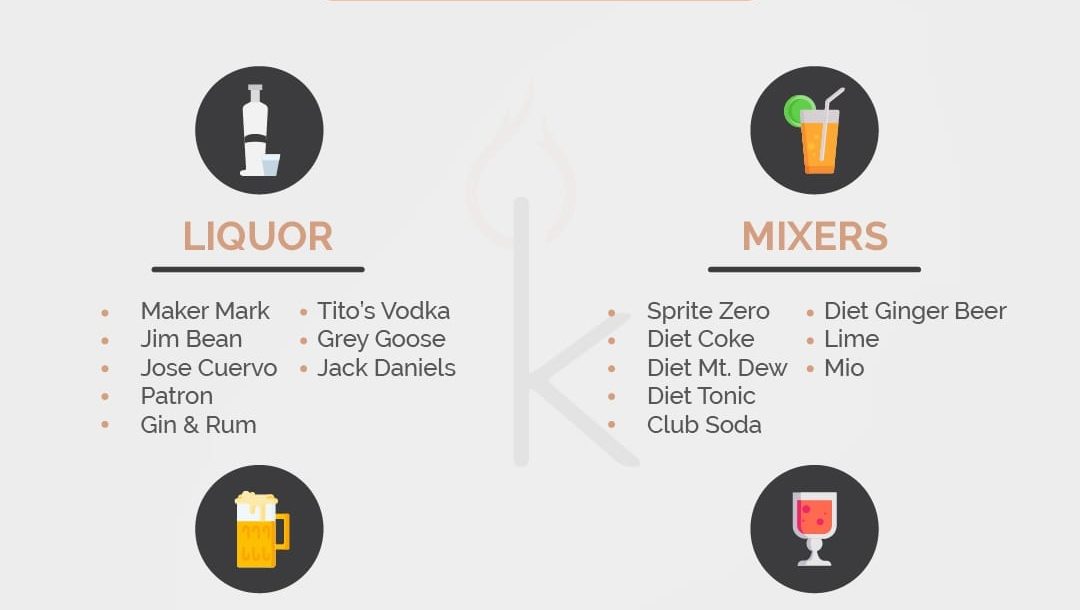
Sample Keto Menu!
Here’s a sample keto menu using our delicious recipes.
Day 1:
Breakfast: Philly style omelet or simple eggs friend in a suitable oil like coconut oil and served with lightly sautéed greens of your choice.
Lunch: You might skip lunch or keep it simple with a turmeric smoothie or a light keto beverage.
Dinner: Pork chops with low-carb fries and/or a zesty broccoli salad!
How Do You Know You’re in Ketosis?
To figure out if you’re in ketosis and getting the benefits of the ketogenic diet, you can test for ketones in different ways, such as urine strips, breath measurements, and blood testing.
You don’t necessarily have to monitor your macronutrients or test if you’re in ketosis. If you feel great and you know you’re keeping it low-carb, high-fat, and moderate protein, you’re likely on the right keto track. If you have more specific health or fitness goals, you might be interested in tracking macronutrients or testing ketones to help you reach your goals.
Helpful Keto Sources:
For more info to help you go keto, check out some of our other articles:
- Tips for Satisfying Your Sweet Tooth on Keto
- Keto Diet Plan for Beginners
- Five Convenient Keto Foods When You’re on the Go
- Getting Started with Keto Meal Prep
- How Do You Start Keto
- Keto on a Budget
- Keto-Approved Foods: Simple Grocery Guide
- Stevia and Keto Sweeteners
- How to Start Shopping for Keto Diet Foods
Are You Following a Ketogenic Diet?
Share your experience with the keto diet. Why did you decide to try going keto? How has the ketogenic diet benefited you? Follow us on Instagram for more top keto tips, tricks, and tools.
References
Freeman, J. M., Kossoff, E. H., & Hartman, A. L. (2007). The ketogenic diet: One decade later. Pediatrics, 119(3), 535-543.
Westman, E. C., Yancy Jr, W. S., Mavropoulos, J. C., Marquart, M., & McDuffie, J. R. (2008). The effect of low-carbohydrate, ketogenic diet versus a low-glycemic index diet on glycemic control in type 2 diabetes mellitus.Nutrition & Metabolism,
Hemingway, C., Freeman, J. M., Pillas, D. J., & Pyzik, P. L. (2001). The ketogenic diet: A 3- to 6-year follow-up of 150 children enrolled prospectively.Pediatrics, 108(4), 898-905.
Weihua, Z., Mukherjee, P., Kiebish, M. A., Markis, W. T>, Mantis, J. G., & Seyfried, T. N. (2007). The calorically restricted ketogenic diet, an effective alternative therapy for malignant brain cancer. Nutrition & Metabolism,
Gasior, M., Rogawski, M. A., & Hartman, A. L. (2006). Neuroprotective and disease-modifying effects of the ketogenic diet.Behavioural Pharmacology, 17(5-6), 431-439.



